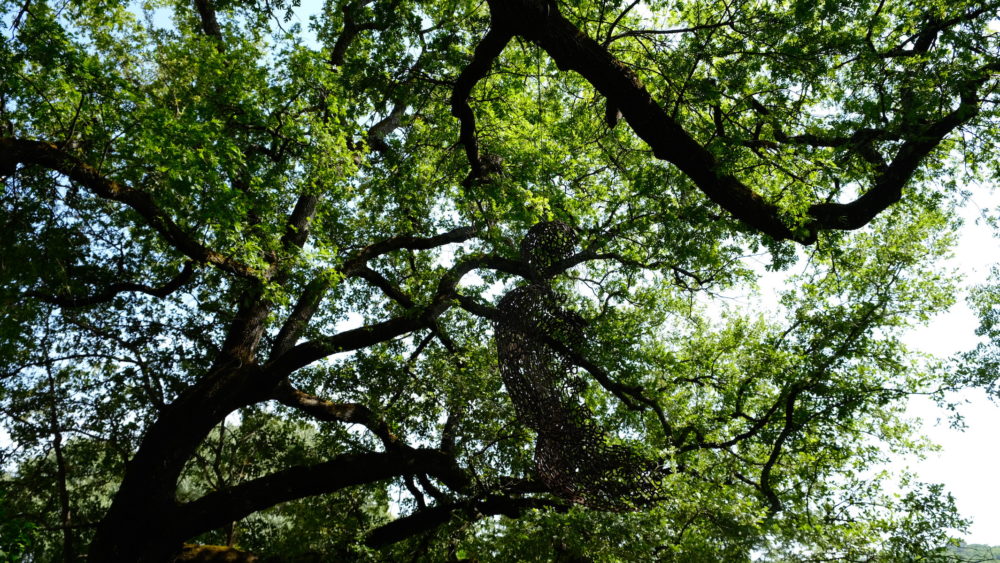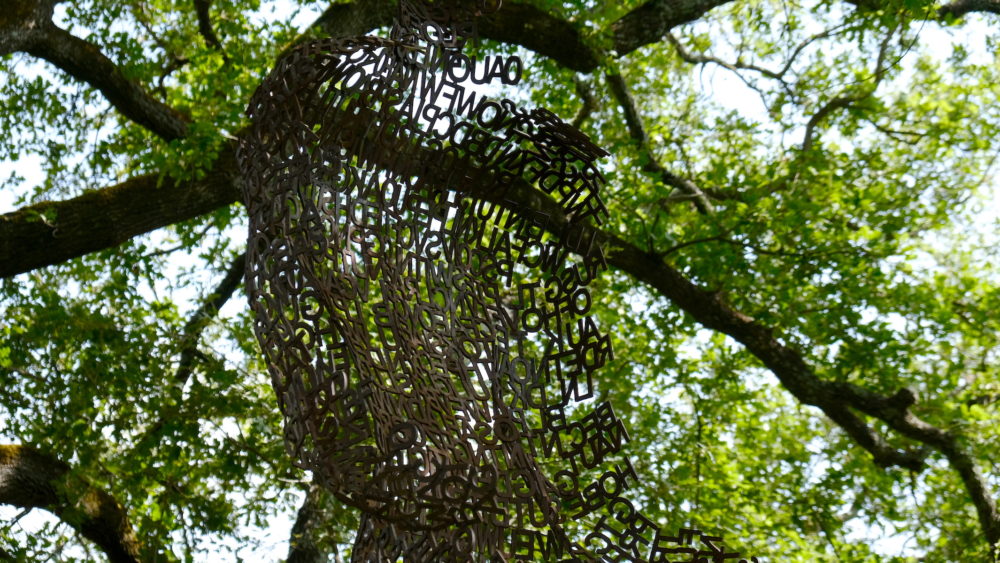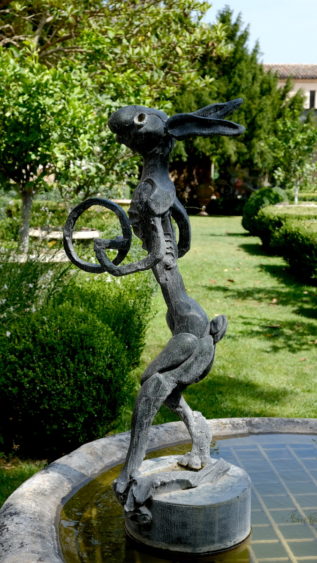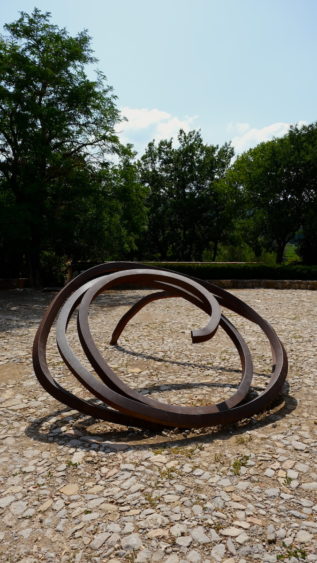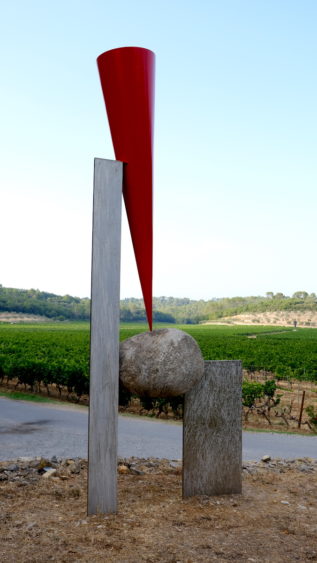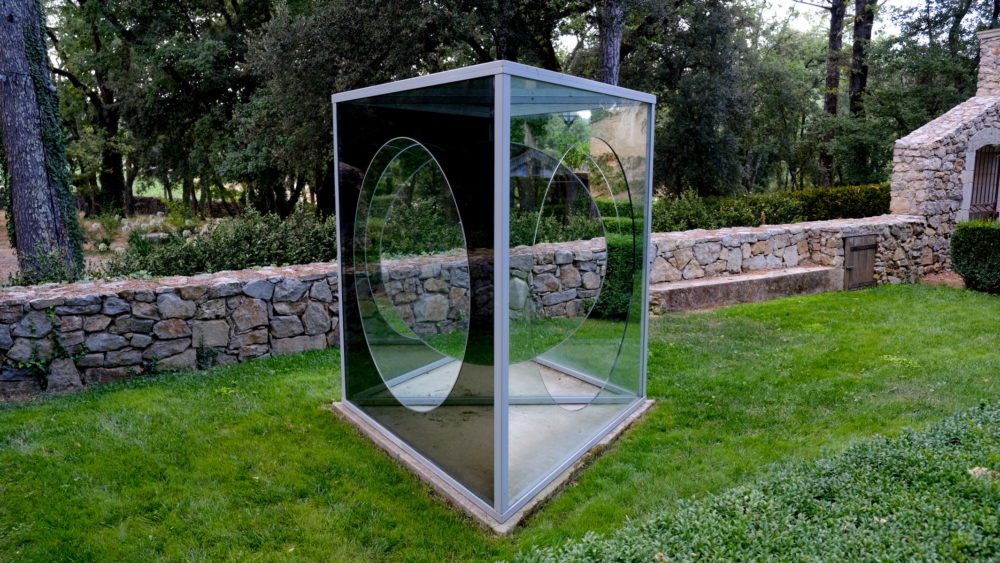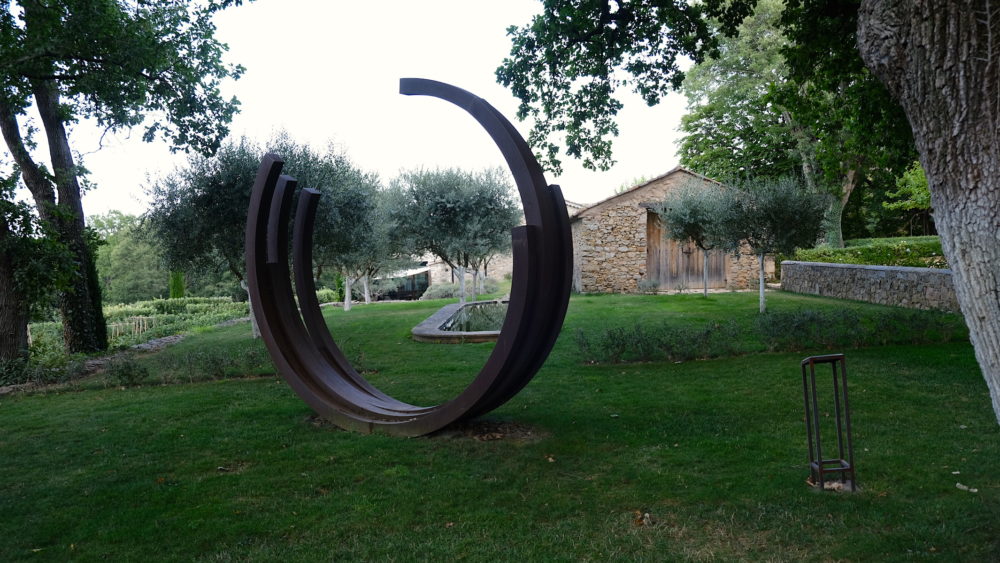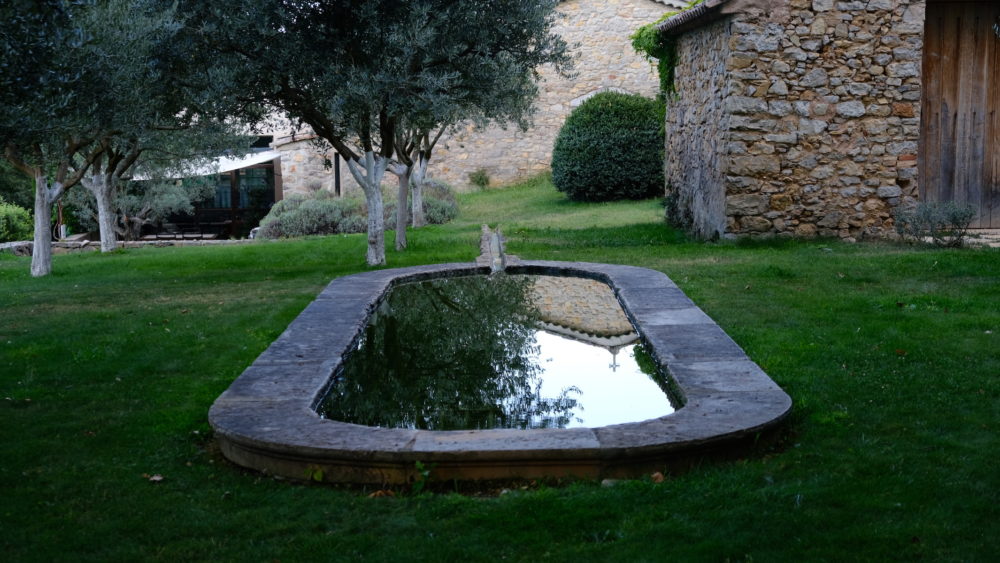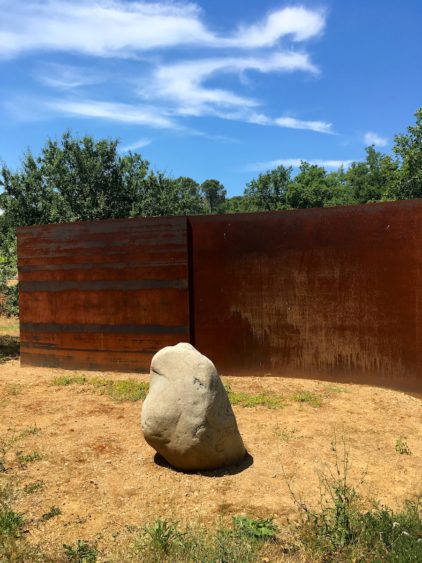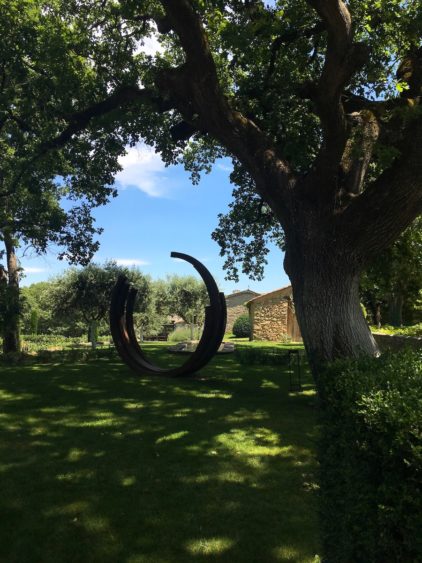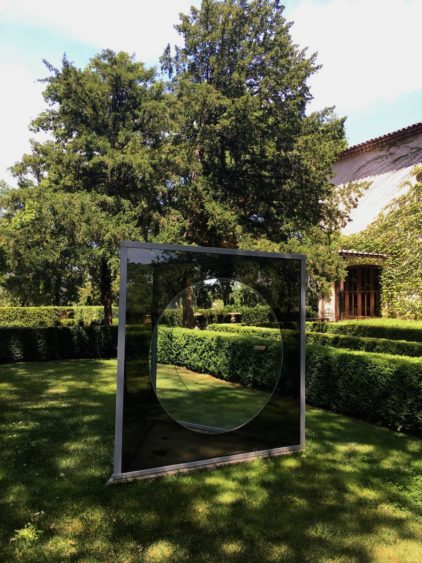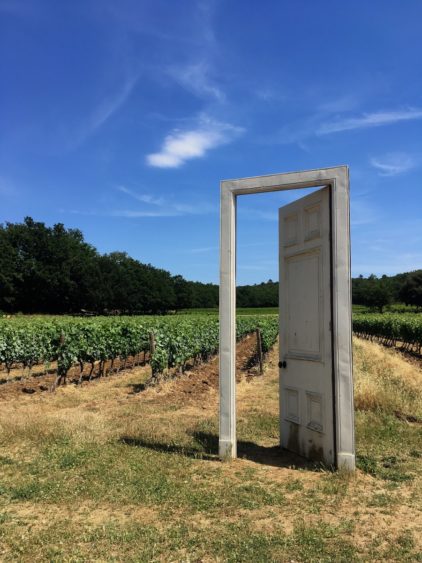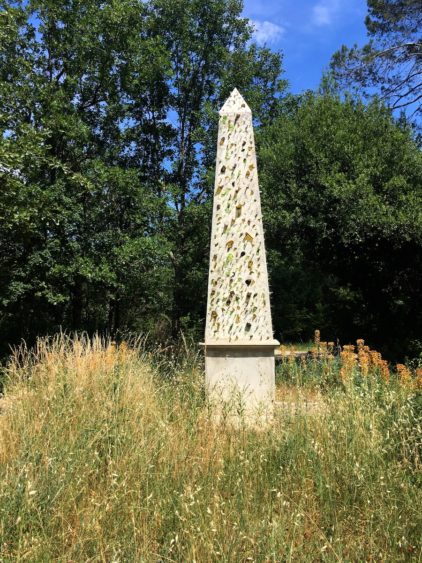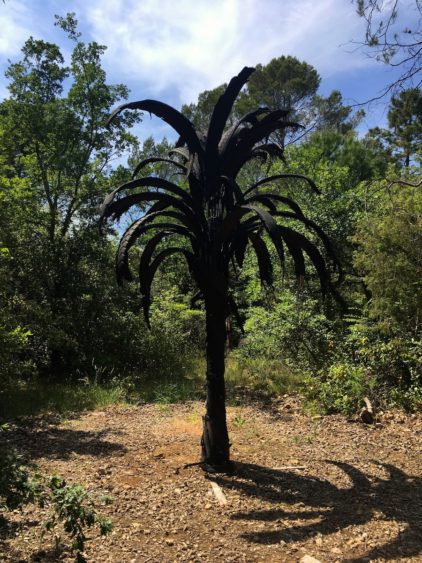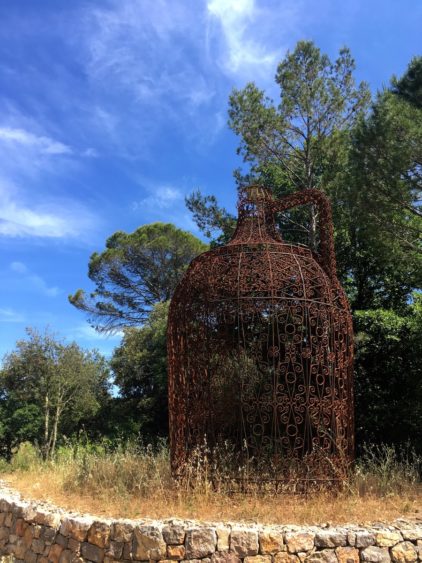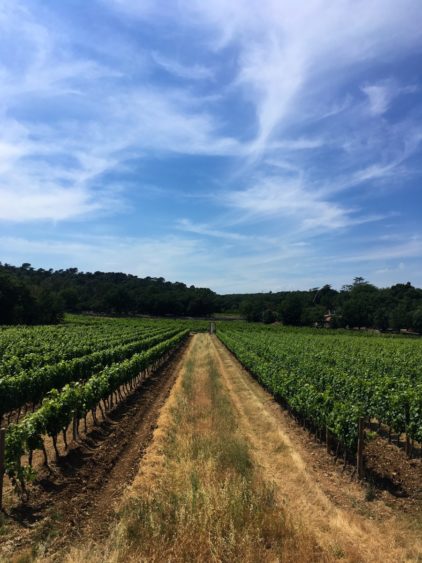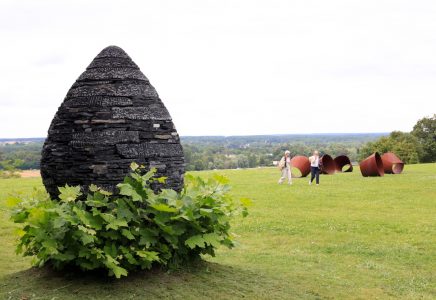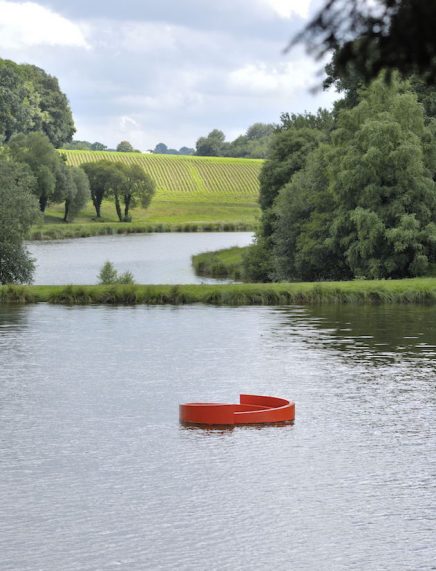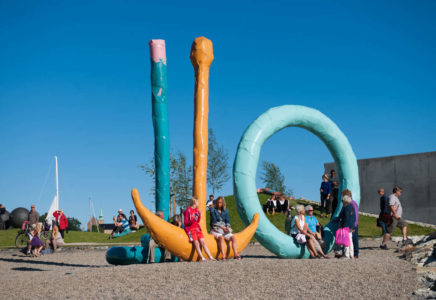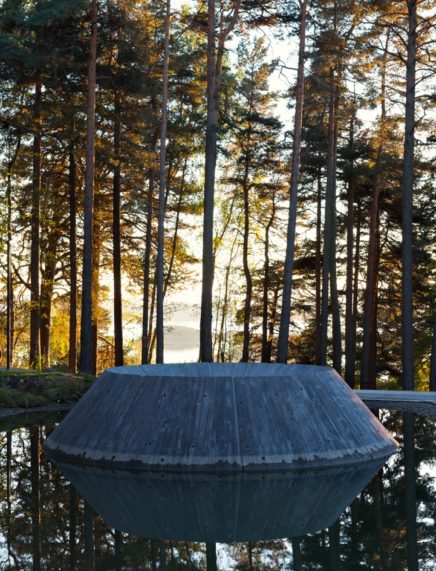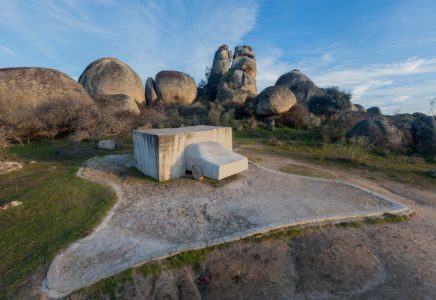Commanderie de Peyrassol
The Commanderie de Peyrassol is a nine-century-old landmark of the exceptional terroir and cultural heritage of Provence. This estate is beautifully located in the heart of the “terres varoises”, close to Flassans-sur-Issole, about an hour drive from Saint-Tropez. Covering 2100 acres, among which vineyards, the Peyrassol estate is one of the biggest sculpture parks in France.
The large cyclopean stones just outside the site are faithful to the etymology of the Provençal term Peirasso, “the land of large stones”. The entrance of the sculpture park is located in the heart of the village, more precisely in the sale’s cellar of the estate, in the shade of a large colored structure installed by Daniel Buren in 2017. The meticulously kept rustic hamlet offers Bed & Breakfasts and a restaurant highlighting local wines and truffles. Other than its “art de vivre”, the village is also a place of exhibition, a sort of “appetizer” before the sculpture park. It hosts Anne and Patrick Poirier’s Œil, as well as sculptures by César, Arman, Bernar Venet, and a miniature of Jean Dubuffet’s Tour aux Figues.
All the works displayed at the Domaine de Peyrassol’s sculpture park belong to the personal collection of the Belgian couple. In 2019, nearly 70 artworks were permanently displayed throughout the entire park. New pieces are added each year, making the Domaine de Peyrassol one of the largest sculpture parks in France in terms of number of artworks.
The Domaine also features an interior exhibition space. Inaugurated in the spring of 2016 and designed by architect Charles Berthier, this gallery is divided into two spaces. The first one, located at the entrance of the building, is a small “white cube” dedicated to temporary exhibits. It opens onto a vast room for the permanent collection. This amazing gallery, which has no walls and embraces the natural slope of the site onto which it was built, brings together famous names of modern and contemporary art. It forms a diverse ensemble of about 20 pieces including, among others, a neon structure by François Morellet, a kinetic composition by Rafael Soto, an assemblage by Frank Stella, and a peculiar automated installation by Jean Tinguely.
Strangely, major artworks are not displayed in the sculpture park, but rather in the sculpture garden of the estate. This terminological differentiation between park and garden is defined by the fact that a dozen pieces are concentrated in a limited perimeter, close to the family residence. Installed on impeccable lawns, these artworks integrate a space that seems enclosed, where nature is controlled and where the line between private and public space is blurred.
Within this garden, placed on a ceremonial fountain, stands the sculpture of a hare, a figure dear to British artist Barry Flanagan. Gazing upward, you will discover Jaume Plensa’s suspended creation, Tel-Aviv II. Attached to the branches of a sturdy oak tree, this anthropomorphic silhouette made of letters gently swings with the wind. A little further, surrounded by high boxwoods, South-Korean artist Lee Ufan’s installation La Tombe, hommage à André Le Notre consists in a deep excavation in which was laid a large stone on a steel plate. Stone and steel also meet a few yards further, in another of his mysterious installations, Relatum, Dialogue Z.
Important fact about these two works: they were not designed or made specifically for the site. The Domaine de Peyrassol therefore did not commission these pieces and Lee Ufan did not decide on their location. These two sculptures – and most specifically L’hommage à André Le Notre – came from a retrospective presented by Lee Ufan in 2014 at the park of the Château de Versailles. For this major exhibition, La Tombe was displayed in the Bosquet des Bains d’Apollon. Installed at the Domaine in June 2015, these two “relocated” pieces tell a lot about the choices made at the sculpture park.
First, it is a collection primarily made of monumental sculptures created, for the most part, by famous artists. However, the Peyrassol sculpture park and its gallery demonstrate there is no real coherence between the works (apart maybe from the animal-themed sculptures: Pascal Bernier, César, Federica Matta, François Xavier Lalanne, Barry Flanagan, Kostis Georgiou, Philippe Berry).
Finally, the works of the sculpture park do not always have a strong connection to the space and the landscape surrounding them. British artist’s Gavin Turk’s work, l’Âge d’or, is probably the one that best succeeds in connecting contemporary art to the local “terroir”. This simple painted bronze sculpture represents an eleven-foot open door. The door cannot be closed and remains permanently open onto the Domaine’s long rows of vineyard. For the wandering visitor, l’Âge d’or is a surreal vision that turns into a poetic moment.
What does this amazingly diverse and rich Domaine de Peyrassol reveal to us in substance? It enlightens us on what a 21st century sculpture park is. Indeed, Peyrassol combines an array of specific features shared with several other large sculpture parks in France, Europe, and throughout the world.
The first specificity is remoteness. Sculpture parks have become destinations. The park of the Fondation Carmignac, opened in the summer of 2018 on the island of Porquerolles, is a perfect illustration: it is impossible to reach it other than by boat. To reach Peyrassol, visitors also need to make the trip: it is a destination in itself.
Second specificity: sculpture parks are rarely a construction ex nihilo. They are part of, participate and, in the best of cases, bring forth the legacy of a history, of a unique cultural and local heritage. Just like Castello di Ama (Italy), Houghton Hall (Great Britain) or Chaumont-sur-Loire, the works of art at the Domaine de Peyrassol are integrated into an important historical context. In the case of Peyrassol, it is illustrated by the imposing knight sculpture of the Order of the Knights Templar by Jean-Jacques Tosello.
The third specific feature lies in the dialectic between exterior exhibition space and one or several, interior spaces. As in Peyrassol, experiencing a sculpture park is not, or not anymore, limited to visiting an outdoor exhibition of sculptures. Today, all major sculpture parks include an interior exhibition space. A perfect illustration of this type of display is the nearby Fondation Bernar Venet, which presents, in addition to monumental outdoor sculptures, a variety of artworks in an old warehouse for the foundation’s permanent and temporary exhibitions. This presents obvious benefits for sculpture parks: it allows constant renewal thanks to temporary exhibitions, and the display of works of art that cannot be maintained outdoors. Furthermore, it ensures a constant flow of visitors, even when the weather is bad.
The last major specificity is that this park is privately funded, according to the wishes of Philippe Austruy and Valérie Bach. Again, Peyrassol is no exception. The nearby Château La Coste, for example, relies on the funds and the personal collection of a patron, Patrick McKillen. Some parks are even named after their owner: the Gori Collection (Italy), Gibbs farm (New Zealand).
Finally, let’s point out that one of the specificities of estates that are altogether sculpture parks and vineyards is “l’art de vivre”. Along with the Château La Coste, the Castello di Ama and a few other French and European estates, the Domaine de Peyrassol is famous in the art world as well as is the wine, food and hospitality sectors. Just like the Domaine de Peyrassol, sculpture parks are currently evolving into unique places where art, nature and epicurean pleasures meet.
The Domaine de Peyrassol is open year-round. Admissions to the park are €8 (€15 for the guided tour).
